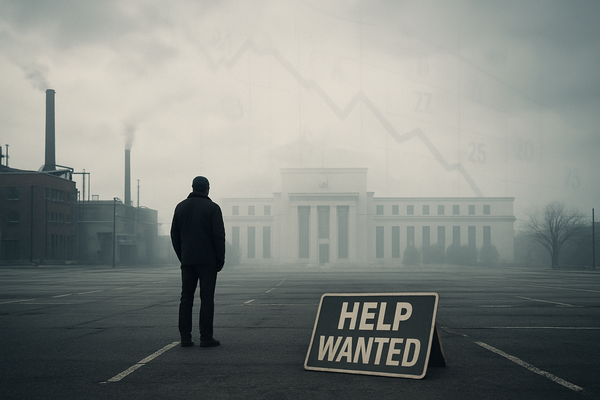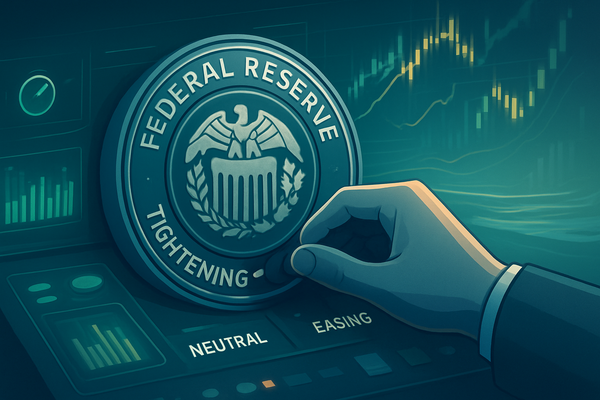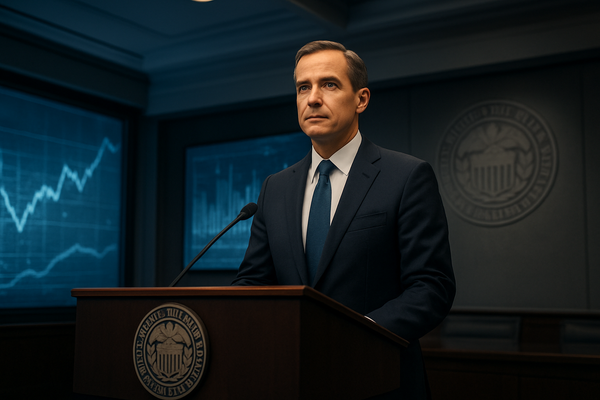Market Breathes Sigh of Relief as Longest Government Shutdown Nears End, Echoing Historical Resilience

As of November 10, 2025, the United States stands on the precipice of resolving its longest government shutdown in history, a fiscal impasse that commenced on October 1, 2025. This protracted legislative deadlock, stemming from disagreements over the 2026 fiscal year appropriations, has seen non-essential federal operations grind to a halt and hundreds of thousands of federal employees furloughed. However, a palpable sense of optimism has swept through financial markets following news of significant bipartisan progress towards a resolution in the Senate, with the White House signaling its support.
The immediate market reaction has been overwhelmingly positive, consistent with historical patterns that often see markets rebound swiftly upon the removal of political uncertainty. US stock futures surged, and major indices rallied across the board, with technology stocks leading the charge. This market behavior underscores a recurring theme: while government shutdowns can introduce short-term volatility and weigh on investor sentiment, the broader financial landscape often demonstrates remarkable resilience, tending to "look through the noise" of political gridlock in favor of underlying economic fundamentals. This article will delve into the historical performance of the stock market during previous US government shutdowns, drawing parallels and extracting lessons from past market reactions to provide context for the current climate.
The Enduring Calm: A Look Back at Market Performance During Past Shutdowns
Historically, the stock market has shown a surprising degree of resilience in the face of US government shutdowns, often shaking off the political drama with minimal long-term repercussions. While the current 40-day shutdown has set a new record for duration, the market's initial positive response to an impending resolution aligns with a pattern observed in previous closures. The S&P 500 Index (INDEXSP: .INX), for instance, has historically gained an average of 4.4% during such events and has remained in positive territory during the last five shutdowns since 1990, averaging a slight increase of 0.3%.
One of the most notable shutdowns prior to the current one was the 35-day closure from December 22, 2018, to January 25, 2019. This event, triggered by disputes over border wall funding, saw significant disruption to federal services. Despite the political turmoil, the S&P 500 (INDEXSP: .INX) actually surged more than 10% during this period. This seemingly counter-intuitive rally was largely attributed to a dovish pivot by the Federal Reserve, which signaled a more accommodative monetary policy, demonstrating that broader economic and monetary factors often outweigh the temporary disruptions of a shutdown.
Another significant shutdown occurred from October 1 to October 16, 2013, lasting 16 days, primarily due to disagreements over the Affordable Care Act. During this period, the stock market, while experiencing some initial jitters, ultimately saw the S&P 500 (INDEXSP: .INX) finish slightly up. Economic data releases were delayed, creating some uncertainty, but the market's overall trajectory was dictated more by ongoing corporate earnings reports and global economic indicators than the temporary halt in government operations. These historical precedents suggest that while shutdowns can create headlines and temporary anxieties, their capacity to derail a fundamentally sound market is often limited, with investors typically anticipating a resolution and focusing on the bigger economic picture.
Sectoral Shifts: Who Wins and Who Loses Amidst Government Standoffs
While the broader market often weathers government shutdowns with relative calm, certain sectors and public companies can experience more direct impacts, creating both winners and losers. Companies heavily reliant on government contracts or regulatory approvals often bear the brunt of the disruption, while others, particularly those with less federal exposure, may remain largely unaffected or even see indirect benefits.
On the losing side, businesses that depend on federal spending or government services are immediately impacted. Defense contractors like Lockheed Martin (NYSE: LMT) or Boeing (NYSE: BA) might face delays in contract approvals, payments, or new orders, although the long-term impact on their substantial backlogs is usually minimal. Government service providers, especially smaller firms that rely on a steady stream of federal work, can face significant cash flow challenges due to payment delays for services rendered. Additionally, industries requiring federal permits or regulatory oversight, such as environmental consulting firms or certain segments of the energy sector, can experience project delays as agencies responsible for approvals are furloughed. Tourism and hospitality sectors in areas surrounding national parks or federal attractions can also see a dip in revenue as these sites close.
Conversely, "winners" are less explicit but can emerge. Companies with strong balance sheets and diversified revenue streams are better positioned to weather the storm. Furthermore, sectors perceived as safe havens during uncertainty, such as utilities or consumer staples, might see increased investor interest. Technology companies (NASDAQ: QQQ), particularly those with minimal direct government reliance, often continue their operations unimpeded and can even lead market rebounds post-resolution, as seen in the current situation. The anticipation of a resolution can also spark a "relief rally," benefiting growth stocks that were temporarily suppressed by uncertainty. While direct "winners" are rare, the market's overall resilience often means that a broad portfolio with limited direct government exposure is typically insulated from the most severe impacts.
Broader Implications and Historical Echoes
Government shutdowns, while often transient in their direct market impact, carry broader significance that extends beyond immediate stock fluctuations. They highlight the inherent political risks in a divided government and can influence investor confidence, regulatory landscapes, and even international perceptions of U.S. stability. The current shutdown, now the longest in history, fits into a recurring pattern of fiscal brinkmanship that has become a hallmark of modern American politics, raising questions about governance efficacy.
One significant ripple effect is the delay in crucial economic data releases. Agencies like the Bureau of Economic Analysis and the Census Bureau often cease operations, postponing the release of vital statistics such as GDP figures, inflation reports (CPI, PPI), and employment data. This "data blackout" leaves investors, economists, and the Federal Reserve "in the dark," complicating policy decisions and market analysis. For instance, during the 2013 shutdown, the release of the monthly jobs report was delayed, creating a period of heightened uncertainty about the true health of the economy. These delays can lead to mispricing of assets as market participants operate with incomplete information, though the impact is generally temporary.
Historically, these shutdowns often act as stress tests for market resilience and political functionality. While the market has largely proven robust, repeated shutdowns can erode long-term confidence in the stability of U.S. policymaking, potentially impacting foreign investment and the dollar's status as a global reserve currency, though such effects are usually gradual and difficult to isolate. Regulatory agencies, when operational again, often face backlogs, potentially slowing down new product approvals or enforcement actions, which can have downstream effects on industries like pharmaceuticals or finance. The comparison to past events, such as the 1995-1996 shutdowns under President Clinton, shows a consistent theme: political impasses are eventually resolved, and the market, driven by fundamentals, tends to resume its course.
Navigating the Aftermath: What Comes Next
With the longest government shutdown in U.S. history reportedly nearing its end as of November 10, 2025, attention now shifts to the short-term and long-term implications for the financial markets and the broader economy. The immediate outlook is one of relief and potential rebound, as the removal of a significant political overhang typically instills renewed investor confidence and a greater appetite for risk.
In the short term, markets are likely to experience a "relief rally," as observed in the immediate aftermath of the resolution news. Sectors that were particularly sensitive to the uncertainty, such as technology and discretionary consumer goods, may see accelerated gains. The delayed economic data will begin to trickle out, providing a clearer picture of the economy's health, which could either reinforce the rally or introduce new considerations for investors. Companies that faced payment delays or project halts due to the shutdown will likely see operations normalize, potentially leading to a catch-up in revenue and project execution. However, the economic cost of the shutdown, estimated to shave off 0.1% to 0.2% off quarterly GDP growth for each week it lasts, will still be factored into upcoming economic reports.
Looking further ahead, the experience of this record-breaking shutdown could prompt strategic pivots for businesses and policymakers. Companies heavily reliant on federal contracts might explore diversifying their client base or building stronger financial cushions to withstand future payment delays. For investors, the key takeaway remains the market's underlying resilience to political gridlock, reinforcing the importance of a long-term investment strategy focused on fundamentals rather than short-term political noise. However, the recurring nature of these fiscal showdowns suggests that political risk will remain a factor, necessitating vigilance. Potential scenarios include a period of accelerated legislative activity to clear backlogs, or renewed efforts to address the underlying budgetary disagreements that led to the shutdown in the first place, both of which could present new market opportunities or challenges.
A Resilient Market Navigates Political Storms: Key Takeaways
The resolution of the longest U.S. government shutdown in history, as anticipated on November 10, 2025, serves as a powerful reminder of the stock market's remarkable ability to compartmentalize political turbulence from underlying economic realities. While the 40-day impasse undoubtedly caused significant disruption to federal operations and created a cloud of uncertainty, the market's swift and positive reaction to the news of an imminent deal underscores a key takeaway: financial markets often prioritize fundamental economic drivers, corporate earnings, and monetary policy over temporary legislative deadlocks.
Moving forward, investors should assess the market's trajectory through a dual lens. In the immediate aftermath, a continuation of the relief rally is probable, as pent-up investor confidence is unleashed. This could particularly benefit growth-oriented sectors and companies that were temporarily impacted by the shutdown's uncertainty. However, the lingering economic effects, such as the cumulative impact on GDP from delayed spending and furloughs, will eventually be quantified and could temper exuberance. The experience also highlights the importance of diversified portfolios, as companies with direct government exposure faced greater headwinds, while those with broader market ties proved more resilient.
Ultimately, the significance and lasting impact of this shutdown will likely be viewed through the lens of political precedent and economic resilience. While the immediate crisis is averted, the recurring nature of these fiscal showdowns suggests that political risk remains an ongoing, albeit often short-term, factor for investors to monitor. What investors should watch for in the coming months includes the pace of economic data releases, the Federal Reserve's stance on monetary policy in light of new information, and any legislative actions aimed at preventing future shutdowns. The market's ability to weather this unprecedented political storm provides a compelling testament to its enduring strength and its capacity to distinguish between temporary political theater and fundamental economic health.
This content is intended for informational purposes only and is not financial advice



